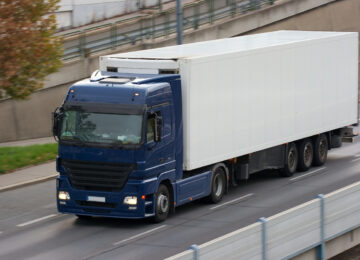What Is a Smokejumper?
Smokejumpers are elite wildland firefighters who parachute into remote fire zones. They aim to contain wildfires before they grow uncontrollable. Unlike ground crews, smokejumpers reach fires inaccessible by roads or trails. Their ability to deploy rapidly makes them essential in early wildfire suppression. Smokejumpers carry all their gear on their backs, ready for action upon landing. These firefighters often operate in isolated wilderness settings. Their missions typically last several days. Their efforts often prevent small fires from becoming catastrophic events. Their work saves property, natural resources, and lives.
Origins and Evolution of Smokejumping
The smokejumping program began in the United States in the 1940s. Officials wanted a way to reach remote fires quickly. The first experimental jumps took place in Montana and Washington. Since then, the program has grown into a specialized national resource. Smokejumpers now serve multiple fire-prone regions across the country. Over time, training standards and gear have dramatically improved. Modern smokejumpers benefit from advanced tools and safety systems. Their evolution reflects changes in wildfire behavior and terrain. National Interagency Fire Center documents this impressive legacy in detail.
Why Remote Firefighting Matters More Than Ever
Climate change has increased the frequency of remote wildfires. Many of these fires begin in rugged, difficult-to-access landscapes. Traditional fire crews cannot always reach these fires fast enough. Smokejumpers fill this critical gap in wildfire response. Their ability to act early helps prevent widespread destruction. Remote fires also threaten endangered ecosystems and isolated communities. Early intervention reduces long-term suppression costs. As fires intensify, smokejumpers play an increasingly vital role. Their presence on the front lines helps reduce wildfire damage across the board.
Smokejumper Deployment Strategies
How Firefighting Agencies Identify Remote Fire Threats
Agencies use satellites, lookout towers, and aircraft to detect wildfires. Remote regions often lack immediate human reporting. Technology plays a vital role in early fire detection. Once a fire is identified, analysts assess its location and potential spread. They determine if roads allow for a standard crew response. When access is limited, smokejumpers become the best option. Specialists evaluate wind, fuel types, and terrain before deciding. These evaluations ensure resources go where they’re most effective. Quick decisions can mean the difference between containment and disaster.
Airborne Deployment Tactics: Planes, Parachutes, and Drop Zones
Smokejumpers use specially outfitted aircraft for deployment. These planes carry personnel, gear, and cargo. Pilots fly low over target zones to evaluate jump conditions. Spotters inside the plane select safe landing areas for the jump. Once cleared, smokejumpers parachute into position with their tools. Cargo boxes with additional supplies follow them shortly after. Landing safely requires strong winds, skill, and calm nerves. Drop zones are usually small clearings or flat ridges. A well-coordinated jump can set the tone for mission success.
Coordination With Ground and Aerial Units
Smokejumpers do not work alone. They often coordinate with helicopters, engines, and hotshot crews. Upon landing, they establish communication with nearby teams. These teams support one another with fire lines, water drops, or supplies. Coordination improves safety and operational efficiency. Aerial units provide water or retardant to assist the effort. Ground crews may join once access improves. Together, they build containment strategies for the evolving fire. This teamwork approach ensures comprehensive wildfire management.
Specialized Gear and Equipment
Parachuting Equipment: Suits, Helmets, and Chutes
Smokejumpers wear flame-resistant suits to protect them from landing injuries and fire exposure. Helmets shield their heads during both descent and impact. Each jumper uses a main parachute and a backup chute for safety. Parachutes are designed for precise maneuvering in forested terrain. They allow smokejumpers to land in tight clearings with accuracy. Every piece of equipment undergoes regular inspection and maintenance. Proper gear increases the chance of safe deployment. Crews train extensively to handle parachute operations. Safety always remains the top priority during airborne entry.
Firefighting Tools for Remote Terrain
Once on the ground, smokejumpers rely on hand tools to battle fires. Tools include Pulaskis, chainsaws, and shovels for clearing brush. They use these to create firebreaks and contain flames. Lightweight gear ensures mobility over long distances. Each firefighter carries food, water, and medical kits. They often remain in the field for up to 72 hours. Tools are carefully chosen to balance weight and function. Crews receive thorough training on proper tool use. Efficiency in the field depends heavily on having the right gear.
Communication and Navigation Technology
Modern communication tools help smokejumpers stay in touch with command centers. Radios allow real-time updates and coordination with aircraft. GPS devices assist with navigation through dense forests. In remote areas, satellite phones can ensure contact when radios fail. Navigation apps also track weather and fire movement. Accurate information guides safer decisions on the ground. Every jumper learns how to use these tools effectively. Technology plays a crucial role in mission success. NASA highlights these communication challenges in remote wildfire zones.
Innovations in Lightweight and Modular Gear
Engineers have developed lighter tools without sacrificing durability. Modular gear systems allow for quicker packing and deployment. These systems reduce fatigue and increase productivity. New materials improve heat resistance and overall performance. Backpacks now feature better weight distribution for long hikes. Compact gear frees space for extra supplies and safety items. Crews test innovations in training before field use. Continuous upgrades keep smokejumpers agile and mission-ready.
Physical and Psychological Demands
Baseline Fitness Requirements for Smokejumpers

Smokejumpers must pass strict physical fitness tests. These include timed runs, pack hikes, and strength evaluations. Recruits train for months before qualifying. Cardio endurance and muscular strength are equally important. They often carry over 100 pounds of gear. Fitness ensures that they can handle rugged terrain. Physical conditioning also reduces the risk of injury. Crews maintain high fitness standards year-round. Fitness is not optional—it is essential.
Mental Toughness and Decision-Making Under Pressure
Wildland firefighting tests emotional strength constantly. Smokejumpers face danger, fatigue, and isolation. Quick decisions can mean life or death. Crews train to stay calm in high-stress environments. They rely on logic, discipline, and mutual trust. Confidence grows through training and real-life missions. Experience helps sharpen mental resilience. Mental preparation is just as critical as physical training.
Coping With Isolation and Wilderness Stressors
Smokejumpers may spend days alone or in small teams. Limited contact with the outside world adds to the stress. They must adapt to sleeping outdoors in unpredictable conditions. Wildlife, harsh weather, and exhaustion are common stressors. Crews receive training in wilderness survival and self-care. Peer support helps maintain mental balance. Stress management techniques improve endurance and morale. Maintaining mental health is part of long-term performance. Adaptability keeps smokejumpers focused and safe.
Smokejumper Training and Certification
Entry-Level Requirements and Initial Screening
Candidates must be between 18 and 37 years old. They need prior wildland firefighting experience. Initial screenings evaluate physical and psychological suitability. Applicants also complete background checks and medical exams. Those who qualify enter a rigorous training program. The selection process is competitive and demanding. Only the most prepared candidates succeed. Entry-level standards ensure the highest safety and performance.
The Smokejumper Rookie Training Pipeline
New recruits undergo an intensive four-week training course. This includes parachute operations, fire suppression, and survival skills. Training covers aircraft safety and in-air procedures. Rookies complete multiple practice jumps before real deployments. Instructors simulate real fire conditions during training. Recruits must demonstrate teamwork and individual competence. Many fail to complete the program. Those who pass earn the right to serve.
Advanced Wildland Firefighting Certifications
Aviation and Parachute Safety
Advanced wildland firefighting certifications, like the Fire Officer certification, focus on aircraft safety protocols. Smokejumpers learn how to respond to in-flight emergencies. Training includes parachute deployment, steering, and landing techniques. Safety drills prepare jumpers for every possible scenario. These skills must be refreshed annually to remain certified.
Wilderness Survival Skills
Crews learn to build shelters, find water, and signal for help. Survival training prepares them for extended missions. These skills ensure safety when cut off from support. Jumper teams may operate for days without resupply. Courses such as Fire Officer 2 Classes also include components that enhance wilderness leadership and decision-making skills.
Remote Rescue and Emergency Medical Techniques
Smokejumpers receive training in wilderness first aid and CPR. Some also qualify as EMTs. They must stabilize injuries until evacuation is possible. These skills often save lives in isolated locations.
Continuing Education and Recertification
Smokejumpers update certifications every year. They attend workshops, refresher courses, and skill drills. New tools and protocols require constant learning. Ongoing education ensures operational readiness. Smokejumpers interested in expanding fire science knowledge often enroll in Building Construction for the Fire Service courses. Training never stops, even for veterans.
Operational Challenges in Remote Wildfire Response
Terrain Obstacles and Landing Risks
Forests, mountains, and steep ridges make parachute landings difficult. Wind shifts and obstacles increase injury risk. Spotters must identify clearings large enough for safe landings. Even with planning, unexpected conditions can occur. Injuries during landing are not uncommon. Smokejumpers receive specialized training to minimize risks. They also practice emergency landings regularly. Mastery of terrain assessment improves safety. Each jump carries an element of unpredictability.
Communication Gaps and Delays
Remote areas often lack reliable communication infrastructure. Radios can lose signals due to terrain interference. Delays in reporting conditions can affect response strategies. Teams use repeaters and satellites to bridge communication gaps. Still, challenges persist in deep wilderness zones. Crews adapt by planning redundancies into operations. Clear communication protocols reduce confusion and delay. Reliable contact is critical to safety and coordination.
Managing Logistics in Isolated Areas
Every mission requires precise planning and support. Crews must carry enough food, water, and medical supplies. Weather delays can slow resupply efforts. Cargo drops may miss their targets in poor visibility. Smokejumpers plan for self-sufficiency. They manage resources carefully to last through missions. Base crews help coordinate logistics from afar. Success depends on both ground and air coordination.
Climate Change and the Rising Complexity of Fires
Hotter temperatures and longer droughts fuel more intense fires. Fires now spread faster and behave less predictably. Remote areas become ignition points due to dry vegetation. Smokejumpers must adapt to rapidly changing fire conditions. They train with updated models and forecasting tools. Agencies revise deployment strategies based on new fire patterns. Smokejumpers face more complex missions every year. Flexibility and preparedness remain key to effectiveness. USDA Forest Service provides research on climate-driven wildfire trends.
Smokejumper Base Operations and Logistics
Overview of Smokejumper Bases Across the U.S.
Several bases across the country support smokejumper operations. Key locations include Montana, Idaho, and California. Each base covers a wide operational area. Bases store gear, maintain aircraft, and house personnel. Each facility customizes its approach to local terrain and fire risk. Smokejumpers deploy seasonally or year-round, depending on location. The network ensures nationwide coverage when needed. Strategic placement allows rapid regional response.
Staging, Refitting, and Rapid Response Coordination
Bases maintain readiness through careful staging protocols. Gear must be inspected, packed, and available at all times. Teams refit after each mission with fresh supplies. Coordination teams track weather and fire alerts continuously. Rapid deployment depends on efficiency and preparedness. Bases operate like well-oiled machines. Every minute counts during fire season. Seamless coordination enables fast action when danger strikes.
Maintenance of Aircraft and Equipment
Aircraft undergo strict maintenance schedules for safety. Mechanics inspect planes before every mission. Chutes, helmets, and harnesses also receive regular checks. Gear must meet strict federal safety standards. Delays due to equipment issues can cost lives. Maintenance crews play a vital behind-the-scenes role. Their work ensures reliable and safe operations. Every jumper relies on their precision.
Collaborative Wildfire Response Models
Working With Hotshot Crews and Helitack Teams
Smokejumpers frequently work alongside hotshot crews. These teams build firebreaks and manage fire behavior on the ground. Helitack units support with aerial water and supply drops. Combined efforts increase effectiveness across terrains. Joint operations require clear coordination and trust. Each team brings specialized skills to the mission. Collaboration improves containment success. Teams learn from each other and adapt.
Cross-Border Coordination in Fire-Prone Regions
Wildfires often cross state and national borders. Agencies must coordinate across jurisdictions. U.S. smokejumpers sometimes assist in Canada or Mexico. Mutual aid agreements make international cooperation possible. Cross-border training improves unified responses. Shared strategies help manage resources effectively. Fires ignore borders, so teamwork must extend beyond them.
Integrating Local Knowledge Into Remote Response Tactics
Local rangers and residents know the terrain best. Their insights help smokejumpers navigate safely. They also share tips about fire history and weather patterns. Including local voices improves planning and safety. Smokejumpers often consult local experts before deployment. Community involvement strengthens trust and outcomes. Knowledge sharing leads to smarter firefighting strategies.
Career Pathways and Professional Development
Entry-Level to Expert: Building a Smokejumper Career
Many smokejumpers start as seasonal wildland firefighters. With experience, they apply to smokejumper programs. Advancement depends on skill, fitness, and leadership. Crews value reliability and commitment. Veterans often mentor newcomers. Career paths include instructor roles or training officers. A career can span decades with dedication. Experience builds respect and responsibility.
Leadership Roles and Specialization Tracks
Seasoned smokejumpers may lead jump teams or coordinate missions. Specialized tracks include training, logistics, or gear development. Leaders guide strategic planning and oversee safety. Leadership requires communication and quick decision-making. Promotions reflect experience and leadership potential. Some serve as liaisons to other firefighting agencies. Leadership strengthens team cohesion and mission success. Smokejumpers aiming for leadership often pursue Fire Officer 1 Courses to deepen their command and management skills.
Civilian Applications of Smokejumper Skills
Many skills transfer well to civilian roles. Emergency medical training opens doors in healthcare. Wilderness survival benefits outdoor education and adventure work. Communication and logistics apply to disaster response teams. Veterans often teach or consult in fire safety. Smokejumpers bring resilience and teamwork to any role. Their skills remain valuable even outside firefighting.
Safety Protocols and Risk Mitigation
Injury Prevention and Emergency Evacuation Procedures
Safety begins with preparation and training. Jumpers learn how to land without injury. Crews also train for injuries in the field. Emergency kits include splints, bandages, and pain relievers. Helicopters or aircraft evacuate injured personnel when necessary. Evacuation drills occur regularly at training sites. Every team practices these protocols carefully. Injury response must be fast and organized. Responders may also benefit from EVOC training, which strengthens vehicle control and evacuation logistics in wildfire zones.
Post-Mission Debriefing and Health Monitoring
After each mission, crews undergo health checks. Physical and mental conditions are assessed. Teams review mission events to learn and improve. Debriefings include honest discussion about successes and risks. Commanders track long-term health metrics. Support services address stress or trauma. Debriefs help refine tactics for future missions.
Lessons Learned From Past Incidents
Every incident teaches valuable lessons. Reports detail what worked and what failed. Crews use this data to adjust tactics. Sharing these insights strengthens safety across agencies. Training updates reflect lessons from the field. Open discussions prevent repeating mistakes. Learning culture ensures continual improvement.
Impact and Public Perception
How Smokejumpers Are Viewed by the Public
Smokejumpers enjoy strong public admiration. People view them as brave and selfless. Their work inspires respect and gratitude. Community members often thank crews in person. Media stories highlight their heroism. Public support boosts morale among firefighters. Outreach efforts deepen this positive connection.
Media Coverage and Cultural Representations
Movies and documentaries often portray smokejumpers as action heroes. While exciting, these depictions can overlook the technical challenges. Real missions involve teamwork, skill, and planning. Crews welcome accurate portrayals that highlight their expertise. Media exposure raises awareness about wildfire risks. Responsible coverage educates viewers and honors crews. Representations shape public understanding of the job.
Advocacy for Improved Working Conditions and Funding
Smokejumpers need consistent support and funding. Advocates push for better pay, housing, and medical coverage. Crews face long seasons with little rest. Lawmakers and communities can help improve resources. Investments in gear, training, and health services matter. Better conditions reduce burnout and turnover. Advocacy ensures long-term success for the program.
The Future of Remote Wildfire Operations
Emerging Technologies: Drones, Sensors, and AI
Technology is changing how teams detect and fight fires. Drones scout fires without risking human lives. Sensors track wind, heat, and fuel levels. AI helps predict fire behavior. These tools assist smokejumpers in planning their approach. Technology enhances situational awareness and safety. Innovations improve response times and outcomes. The future combines human skill with digital tools.
Adapting Training Programs for New Threats
Training must evolve with the changing fire landscape. Programs now include drone operation and data analysis. Crews also learn about new fuels and climate factors. Virtual simulations help train for rare scenarios. Instructors revise content regularly. Up-to-date training keeps jumpers ready for modern challenges. Lifelong learning remains part of the job.
Forecasting the Role of Smokejumpers in Tomorrow’s Wildfire Strategy
Smokejumpers will remain critical to early fire response. As fires worsen, their speed and flexibility gain value. Agencies may expand their roles into prevention and education. Innovation and funding will shape their future. Public awareness also plays a role. Smokejumpers stand ready to adapt and respond. Their mission continues with new tools and strategies.
FAQ: Smokejumping Essentials
How long does it take to become a smokejumper?
It usually takes several years of wildland firefighting experience before applying. Training adds another month of intense preparation.
Do smokejumpers only work during fire season?
Most work seasonally, but some remain year-round. Off-season duties include training, gear maintenance, and public education.
Can women become smokejumpers?
Yes, women have served as smokejumpers for decades. The program welcomes anyone who meets its demanding standards.












